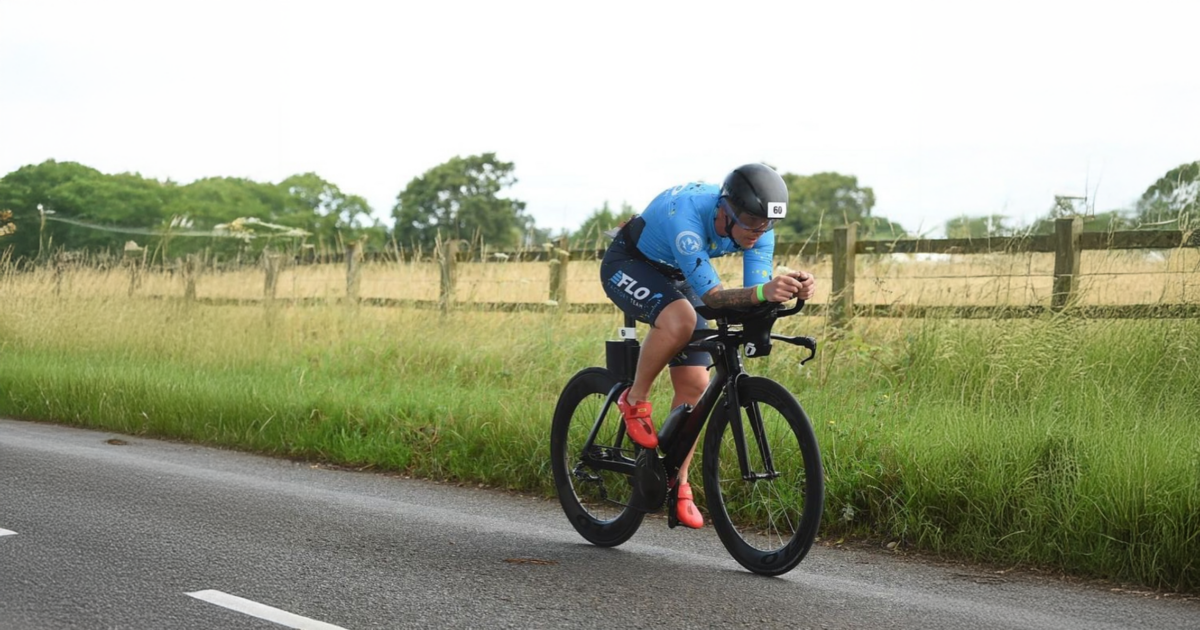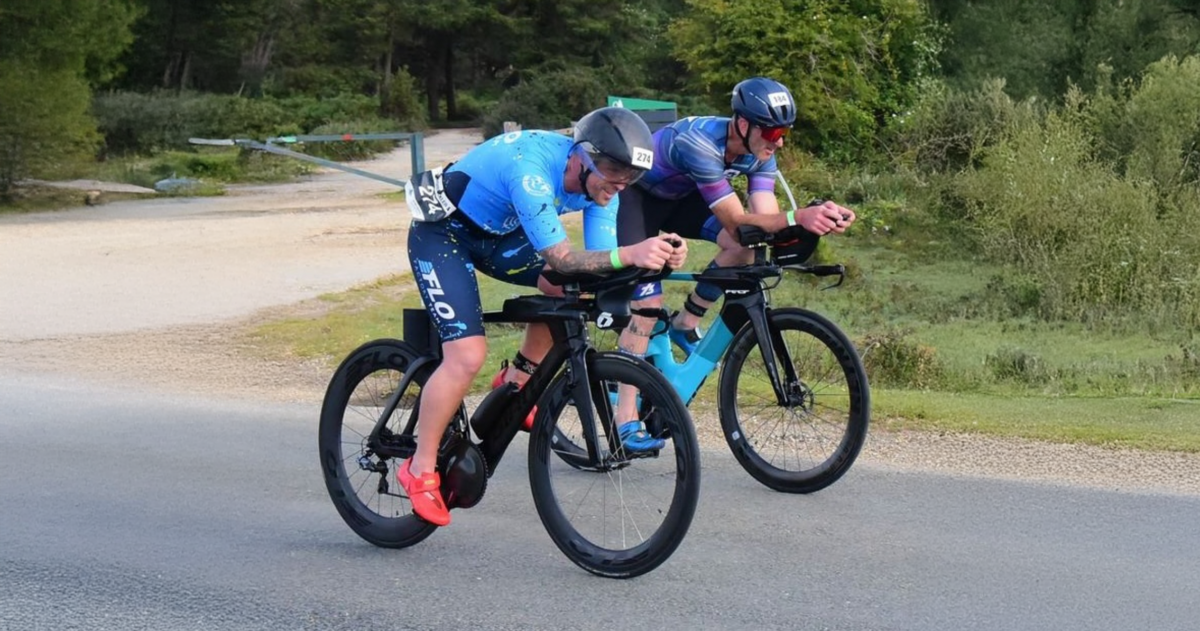When optimizing cycling performance, every watt counts. Cyclists and triathletes obsess over watts saved through meticulous training plans, equipment choices, and aerodynamic improvements. A common myth that has circulated within cycling communities is that using a smaller, more “aero” front tire paired with a larger rear tire can improve overall speed. The logic is straightforward: a smaller tire cuts through the wind better because it has less frontal area. However, is this theory backed by real-world data?
At FLO Cycling, we’ve extensively studied the dynamics between aerodynamic drag and rolling resistance, encapsulating this relationship into a term we call “Total Power.” Let’s take a closer look at this popular myth, dissect it through rigorous testing, and understand why matching larger tires on both wheels is, in fact, the smarter, faster choice.

Understanding Total Power
First, it’s crucial to clarify what we mean by Total Power. Simply put, Total Power is the sum of watts consumed by both aerodynamic drag and rolling resistance. Mathematically, it’s represented as:
Total Power (W) = Aerodynamic Drag (W) + Rolling Resistance (W)
The goal of any cyclist or wheel engineer is to reduce this Total Power number as much as possible, thereby maximizing speed and efficiency.
Aerodynamics vs. Rolling Resistance
It’s common to think solely about aerodynamics when selecting tires and wheels. The narrower the tire, the lower the frontal area, theoretically reducing drag. However, a critical oversight in this thinking is rolling resistance.
Rolling resistance is the frictional force resisting the tire’s movement over the road surface. It arises from the tire’s deformation and subsequent energy losses as it continuously contacts the ground. Wider tires, due to their lower pressure and narrower contact patch, often exhibit significantly less rolling resistance.
Therefore, when considering tire size, it’s vital to account for both aerodynamic and rolling resistance factors. Neglecting either can lead to incorrect conclusions about what’s truly fastest.
Testing the Theory: FLO 64 AS Wheel Example
At FLO Cycling, we believe in testing and validation through data. We rigorously tested our FLO 64 AS wheels with various tire widths—25mm, 28mm, and 32mm—using the Continental GP 5000 tire, a benchmark in performance cycling.
Consider the measured Total Power for two popular tire widths on our FLO 64 AS:
- 25mm Tire: 19.9 Watts
- 28mm Tire: 19.64 Watts
- 32mm Tire: 20.58 Watts
You can see that the 28mm tire is faster. Here’s what happens. The 25mm tire is faster aerodynamically but the rolling resistance is higher than the 28mm tire. When both are added together you see that the 28mm tire is faster. Yes, the 28mm tire has a worse aerodynamic performance but it’s rolling resistance gains outweigh the aerodynamic loss. When looking at the 32mm tire we notice that the rolling resistance is again lower but the aerodynamics start to fall apart with this larger tire resulting in a slower wheel.
Why the Myth Persists
This myth primarily persists due to a simplified aerodynamic analysis that disregards rolling resistance. Riders visualize airflow hitting the narrower front tire first, thinking that this initial frontal area reduction yields significant aero gains. However, aerodynamic drag alone doesn’t determine your speed. The tire doesn’t just need to be aerodynamically sleek—it must roll efficiently as well.
When performing wind tunnel tests at FLO Cycling, wheels are tested individually, each placed directly in the airflow. Results consistently demonstrate that wider tires, optimized specifically for certain rims like the FLO 64 AS, outperform narrower options once total power is measured.

Front vs. Rear: Does Position Change Results?
Some might argue that because the front tire is directly exposed to the airflow, aerodynamics become even more critical upfront. But this overlooks an essential factor: in real-world conditions, rolling resistance and aerodynamic drag are both continuously acting on both wheels simultaneously. The rear tire might have slightly less direct exposure to incoming airflow, but it still significantly contributes to the overall drag and rolling resistance.
Even if we isolate just the front wheel, our testing shows that a 28mm tire on our FLO 64 AS rim consistently results in lower total power consumption. When both wheels run the optimal tire width (28mm in our example), the combined aerodynamic and rolling resistance benefits outweigh any marginal aero improvements of narrower tires.
Real-World Implications
Let’s translate the watt differences into real-world performance.
Consider an Ironman-distance triathlon (112 mile bike leg). Saving even fractions of a watt per wheel translates to measurable time savings. A difference of 0.26/ watts/wheel add up over the total race duration, environmental conditions, rider fatigue, and mechanical losses, these savings become significant.
For competitive cyclists participating in long road races, criteriums, or time trials, optimizing every watt can mean the difference between standing atop the podium or missing out entirely.
Other Considerations: Handling and Comfort
Beyond watts saved, there’s a practical reason to run a larger tire upfront—handling and comfort. Larger tires typically provide better grip, reduced vibrations, improved cornering stability, and enhanced overall ride comfort. These subtle yet impactful improvements allow cyclists to maintain more consistent power output over extended periods due to reduced fatigue.
Engineering Insight: Optimizing Wheel and Tire Interaction
As a wheel design engineer, the complexity of wheel-tire interaction fascinates me. It’s not merely about frontal area or aerodynamics in isolation. The optimal tire choice depends heavily on the rim profile and how seamlessly the two interact. This synergy between tire and rim, known as rim-tire optimization, directly affects total power.
At FLO Cycling, each wheel design undergoes exhaustive computational fluid dynamics (CFD) simulations, wind tunnel verification, and rolling resistance testing. The FLO 64 AS was explicitly developed to maximize the efficiency of 28mm tires, resulting in the lowest Total Power consumption.
Conclusion: The Verdict on Tire Size
Ultimately, the data is clear. Using a smaller tire upfront for aerodynamic gains is a well-intentioned yet misguided approach. Aerodynamics alone cannot fully account for cycling performance. Total Power—combining aerodynamic and rolling resistance watts—is the definitive metric.
Our testing consistently proves that pairing a larger, optimized tire (like the 28mm Continental GP 5000) on both front and rear wheels provides the fastest overall performance.
Don’t let outdated myths dictate your tire choice. Cycling science and engineering advances rapidly, and with the right information, you can confidently select equipment that makes you faster, more comfortable, and ultimately more competitive. Embrace the larger tire on both wheels for superior total power savings—and watch your performance excel.
Ride smart, optimize wisely, and save those precious watts!

Co-founder at FLO Cycling. Jon manages the day to day operations and acts as the lead engineer for all FLO products.
